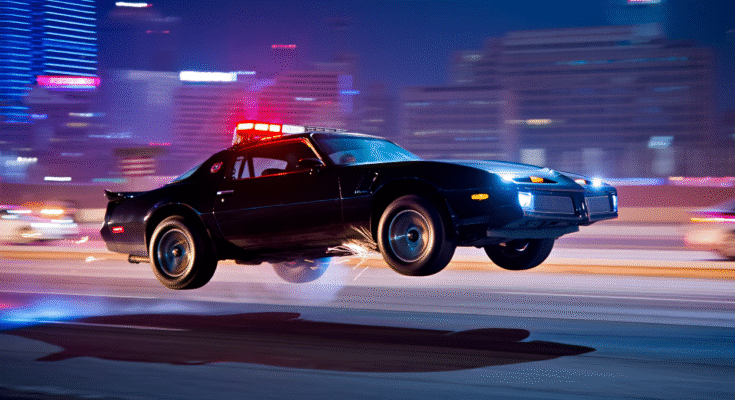There are reboots, there are sequels, and then there are resurrections. Knight Rider 2 (2025) falls firmly into the last category. More than just a continuation, it’s a bold revival of a pop culture icon that once defined 1980s television. With David Hasselhoff stepping back into the leather jacket of Michael Knight, Edward Mulhare as the ever-dignified Devon Miles, and Richard Basehart lending his timeless voice to KITT, this film arrives not as a nostalgia cash-grab but as a full-throttle, heartfelt ode to justice on wheels.
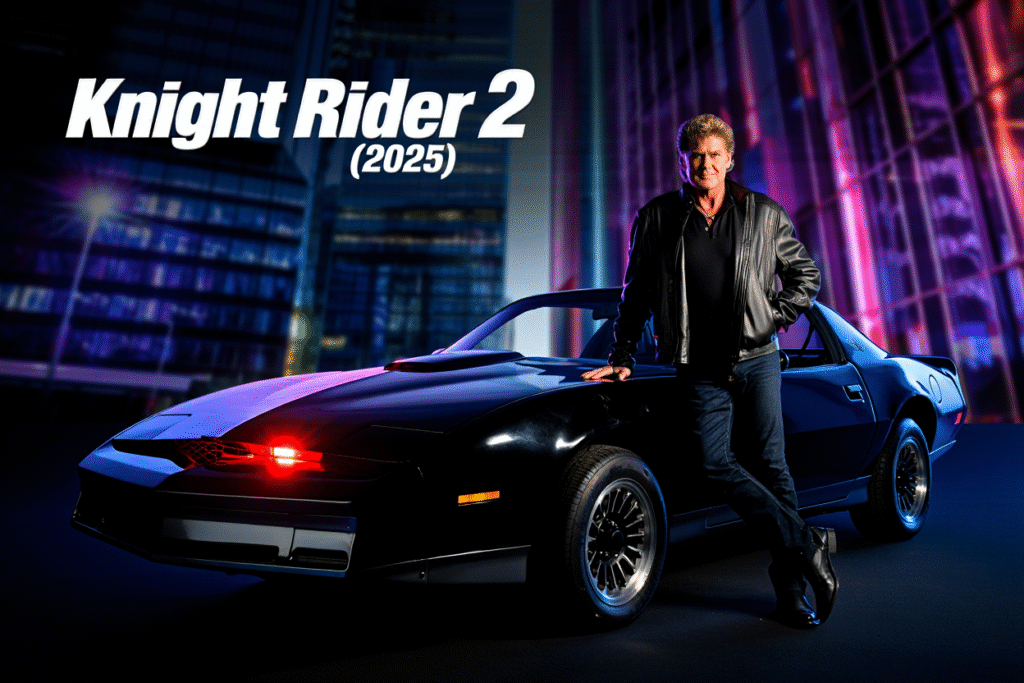
From its opening frame, Knight Rider 2 makes a statement: this is not a museum piece, but a roaring, tire-burning thrill ride built for today’s audiences. The movie begins with a montage that bridges past and present—Michael Knight reflecting on a career defined by shadows and neon, before sliding behind the wheel of the world’s most famous car once again. The familiar red scanner light ignites, cutting through darkness like a promise, and instantly, the magic is back.
At the heart of the film lies the unbreakable bond between man and machine. Hasselhoff brings a weathered gravitas to Michael Knight, a man who has seen too much but refuses to surrender his faith in justice. His interplay with KITT, voiced once more with Richard Basehart’s unmistakable timbre, retains the wit, warmth, and sarcasm that made the duo iconic. Their banter is more than comic relief—it’s a testament to trust, loyalty, and the idea that family doesn’t always come in human form.
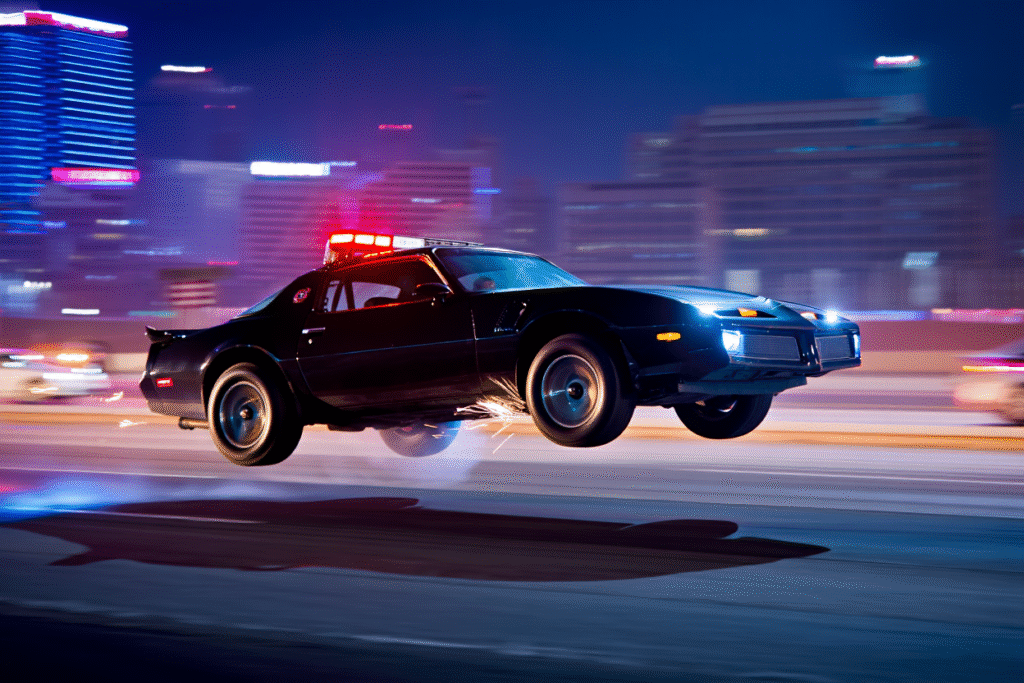
KITT itself is given a stunning upgrade, both visually and technologically. Sleek as ever, the Knight Industries Two Thousand has been reimagined with AI sophistication that feels both futuristic and frighteningly plausible. The arsenal is jaw-dropping: cloaking systems, adaptive armor, and turbo boost leaps that defy physics but never logic. Yet what stands out most isn’t the hardware, but the car’s personality. The filmmakers understand that KITT isn’t just a tool—it’s a character with a soul, and that spirit is honored here.
Edward Mulhare’s Devon Miles provides the moral compass, as steady and dignified as fans remember. His scenes ground the narrative, reminding both Michael and the audience that the crusade isn’t about vengeance but justice. His chemistry with Hasselhoff remains effortless, their exchanges a dance of trust forged over decades of battling corruption together.
The villains of Knight Rider 2 aren’t faceless thugs but high-tech criminals who embody modern anxieties: cyber terrorists, corporate overlords, and mercenaries wielding weapons designed to outmatch even KITT. These antagonists push the heroes to their limits, ensuring that every pursuit, every standoff, feels earned rather than perfunctory. The stakes are not only global but personal, and the film thrives on that tension.
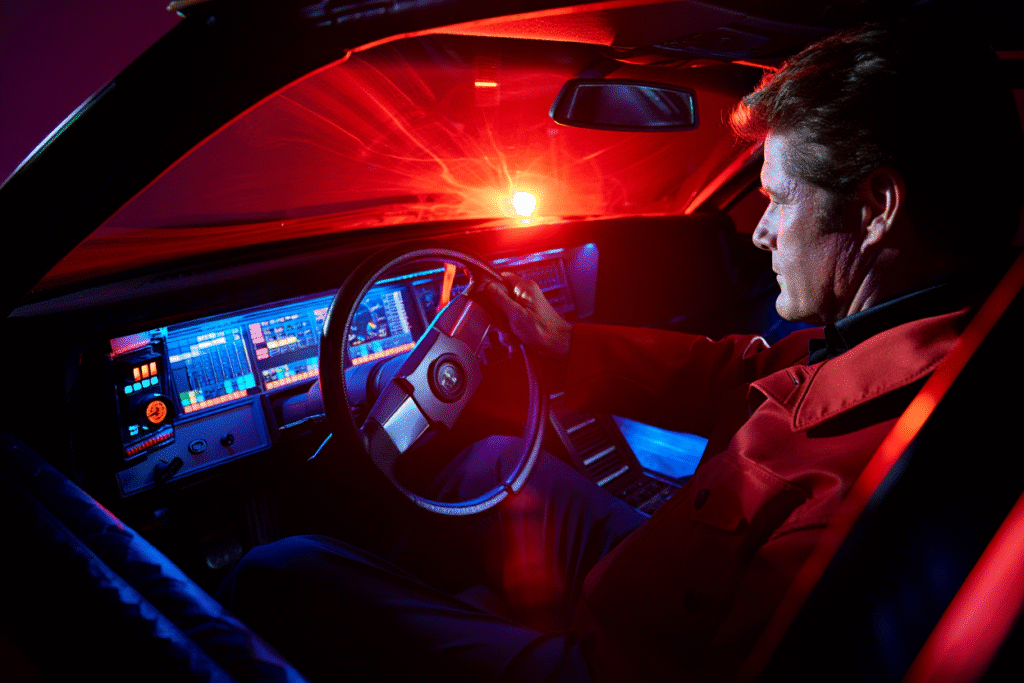
Fuqua-level chase sequences dominate the action. Streets blaze with neon light, engines scream, and KITT launches into turbo boosts that leave audiences gasping. A highlight comes in a desert pursuit under starlit skies, where KITT’s cloaking tech is tested against drone swarms in a balletic display of fire and steel. These set pieces aren’t just spectacle; they’re a visceral reminder of why Knight Rider once captured imaginations worldwide.
But beneath the sleek cars and high-octane action, Knight Rider 2 is ultimately about legacy. Hasselhoff doesn’t play Michael Knight as a superhero—he plays him as a man wrestling with the burden of carrying a myth into a new age. His resilience, tempered by loss and experience, makes him both more human and more heroic. In a world drowning in cynicism, Knight Rider’s message—that one man truly can make a difference—resonates with renewed urgency.
Director Antoine Fuqua (who helms with his usual precision) balances grit with spectacle, refusing to let the film drown in nostalgia. Instead, he uses it as fuel. Each nod to the original—whether it’s the familiar theme swelling during a chase or KITT’s red scanner pulsing in darkness—feels earned, never cheap. The result is a film that respects its roots while carving a new road forward.
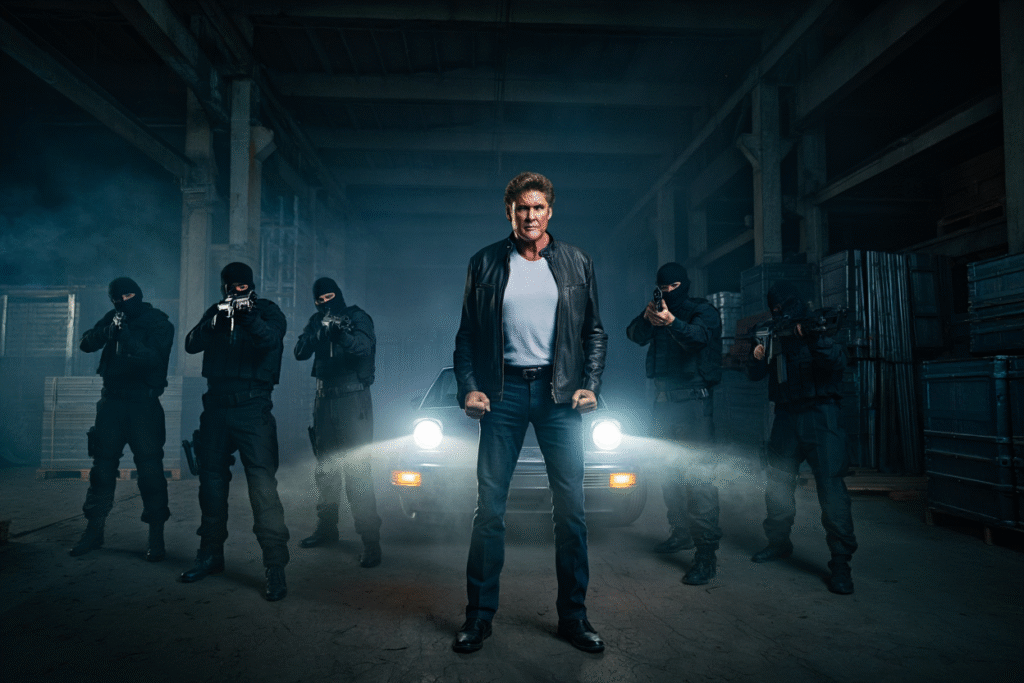
The cinematography amplifies the mythology, framing KITT not just as a car but as a modern-day Excalibur, a weapon of light against encroaching darkness. Meanwhile, the score reimagines Stu Phillips’ iconic theme with a thunderous orchestral-electronic hybrid, layering adrenaline with reverence. Every note, like every rev of KITT’s engine, insists: the legend lives.
In the end, Knight Rider 2 isn’t simply a sequel—it’s a passing of the torch without extinguishing the flame. It celebrates the essence of Michael Knight and KITT while opening doors for new stories, new battles, and perhaps even new crusaders. By the time the credits roll, you’re left with a sense of exhilaration and a quiet belief in the film’s creed: even in an age of overwhelming darkness, one man—and one machine—can still make a difference.
⭐ Score: 8.9/10 — Stylish, heartfelt, and fueled by both nostalgia and innovation. Knight Rider 2 doesn’t just return to the road—it tears down the highway with headlights blazing into the future.
